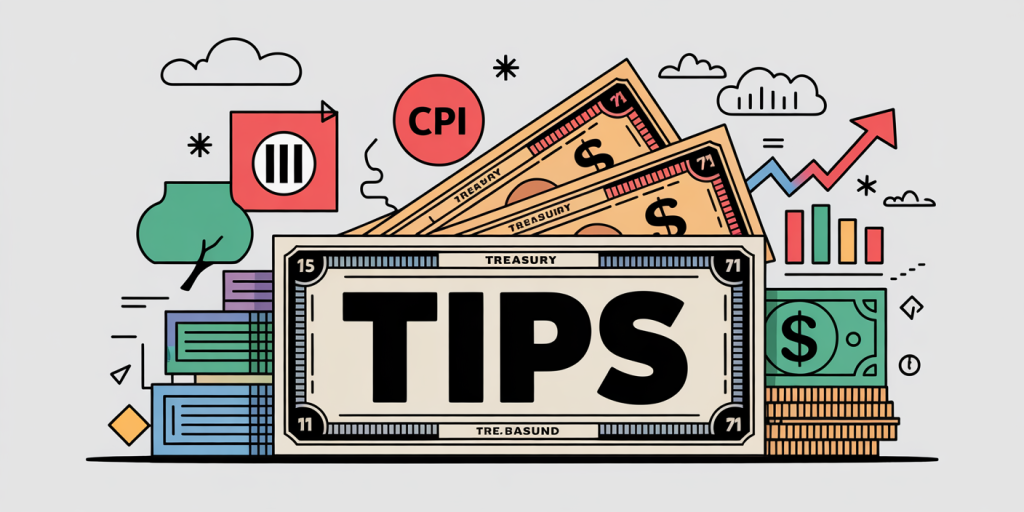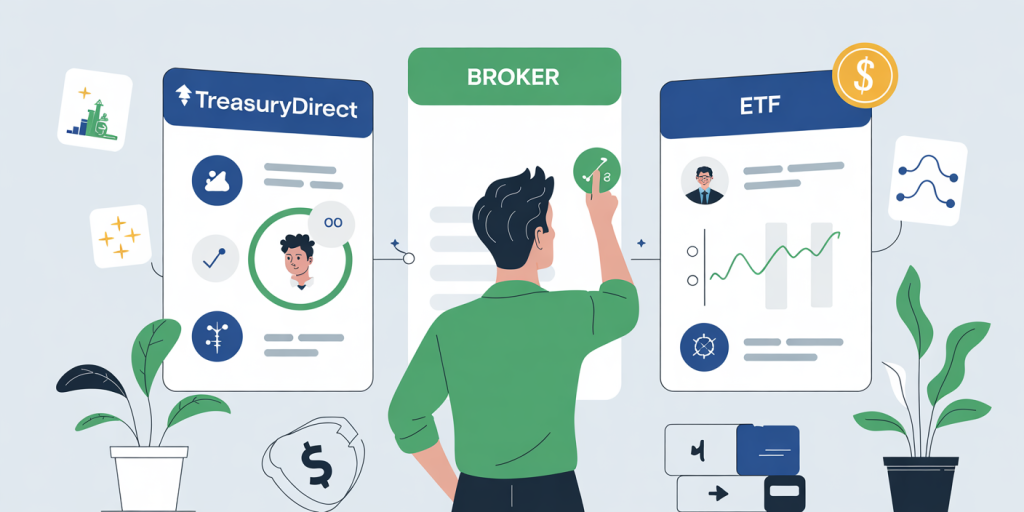Understanding Inflation-Protected Securities (TIPS) and How to Invest in Them
Anúncios
In an era of rising prices and economic uncertainty, investors are constantly searching for reliable ways to preserve the real value of their money. One powerful yet often overlooked tool for protecting purchasing power is the Treasury Inflation-Protected Securities, or TIPS. These government-issued bonds are designed specifically to shield investors from the erosion of inflation.
Whether you’re a conservative investor looking for a safer place to park your savings or a diversified portfolio builder aiming for inflation-adjusted returns, understanding how TIPS work can give you a financial edge. This guide will walk you through what TIPS are, how they function, their pros and cons, and the various methods to invest in them.
What Are TIPS?

Anúncios
Treasury Inflation-Protected Securities (TIPS) are a type of U.S. Treasury bond that is indexed to inflation. The principal value of TIPS increases with inflation and decreases with deflation, as measured by the Consumer Price Index (CPI).
Issued by the U.S. Department of the Treasury, TIPS are backed by the full faith and credit of the U.S. government, making them one of the safest investments available. Their unique structure makes them especially appealing during periods of rising inflation, where traditional fixed-income investments may lose real value.
Anúncios
How Do TIPS Work?
TIPS pay interest twice a year at a fixed rate, but the amount of interest paid varies because it is calculated based on the adjusted principal—not the original face value.
Key Features:
-
Principal Adjustment: The principal amount is adjusted based on changes in the CPI. If inflation rises, the principal increases; if there’s deflation, it decreases.
-
Fixed Interest Rate: The rate is determined at auction and remains constant throughout the bond’s life.
-
Inflation-Linked Payments: Since the principal adjusts, the interest payments grow with inflation.
-
Maturity Options: TIPS are issued in 5-year, 10-year, and 30-year terms.
-
Protection Against Inflation: At maturity, you receive either the inflation-adjusted principal or the original amount, whichever is higher.
Example: If you buy $1,000 in TIPS with a 1% interest rate and inflation increases by 3% over a year, your new principal becomes $1,030. Your next interest payment would be based on this new value, i.e., $1,030 × 1% = $10.30 annualized.
Why Invest in TIPS?
TIPS are often considered a hedge against inflation, offering a number of advantages over traditional bonds or savings accounts.
Benefits:
-
Inflation Protection: Your investment grows with inflation, ensuring your purchasing power is preserved.
-
Low Risk: Backed by the U.S. government, TIPS carry virtually no credit risk.
-
Real Return: TIPS provide a guaranteed “real yield” (return above inflation), unlike nominal bonds.
-
Diversification: Including TIPS in your portfolio reduces overall risk and volatility, especially during inflationary cycles.
TIPS vs. Traditional Treasury Bonds
| Feature | TIPS | Traditional Treasury Bonds |
|---|---|---|
| Inflation Adjustment | Adjusted for CPI | Fixed value |
| Interest Rate | Lower, but adjusted principal | Higher, but constant principal |
| Protection from Inflation | Yes | No |
| Real Return | Guaranteed | May be eroded by inflation |
TIPS are not necessarily meant to replace traditional bonds but to complement them in a diversified portfolio.
How TIPS Are Taxed
While TIPS protect your investment from inflation, the tax treatment can be less favorable—particularly in taxable brokerage accounts.
Tax Considerations:
-
Federal Tax: Both interest income and inflation adjustments to principal are subject to federal income tax.
-
No State or Local Tax: Like other Treasuries, TIPS are exempt from state and local taxes.
-
Phantom Income: You may owe tax on inflation-adjusted increases in principal—even though you won’t receive the principal until maturity. This is often referred to as “phantom income.”
Tax-Efficient Strategy:
Because of the phantom income issue, many investors hold TIPS in tax-advantaged accounts like IRAs or 401(k)s to defer taxes and avoid annual headaches.
Where and How to Buy TIPS

There are several ways to invest in TIPS depending on your goals and level of involvement:
1. Buy Directly from the U.S. Treasury
You can purchase TIPS directly via TreasuryDirect.gov with no fees or commissions.
-
Minimum investment: $100
-
Auction-based: You participate in competitive or non-competitive bids.
-
Automatic reinvestment: Available for maturing TIPS.
2. Through a Broker
Many brokerage platforms like Vanguard, Fidelity, and Charles Schwab allow you to buy TIPS on the secondary market.
-
Higher flexibility: You can buy or sell before maturity.
-
Market pricing: Prices may differ from face value depending on demand and yield.
3. TIPS Mutual Funds and ETFs
If you prefer a hands-off approach, consider investing in a TIPS-focused mutual fund or ETF.
Popular TIPS ETFs:
-
iShares TIPS Bond ETF (TIP)
-
Schwab U.S. TIPS ETF (SCHP)
-
Vanguard Short-Term Inflation-Protected Securities ETF (VTIP)
These funds offer easy access and diversification, but may come with management fees, and their returns are influenced by interest rate movements and market pricing.
When Are TIPS a Good Investment?
TIPS are particularly attractive during:
-
Periods of rising inflation
-
Uncertainty about future inflation
-
Recessionary environments with loose monetary policy
-
When real interest rates are positive
However, they may not be ideal in deflationary periods or when inflation is already falling, as principal adjustments may decline.
Risks and Limitations
While TIPS offer a unique benefit, they’re not without drawbacks:
1. Lower Yields
TIPS generally offer lower interest rates than traditional bonds. The real return is often modest.
2. Deflation Risk
In a deflationary environment, the adjusted principal could decrease. Although you’re guaranteed your original investment at maturity, you might receive lower interest payments in the meantime.
3. Interest Rate Sensitivity
Like other bonds, TIPS can lose value in secondary markets when interest rates rise.
4. Tax Complexity
As mentioned, taxation on inflation adjustments can lead to unexpected tax bills—especially if held in a taxable account.
How to Allocate TIPS in Your Portfolio
Investment advisors often suggest allocating 5% to 15% of your fixed-income portfolio to TIPS, depending on your risk tolerance, investment horizon, and inflation outlook.
Portfolio Use Cases:
-
Retirement Planning: To preserve purchasing power over decades.
-
Short-Term Risk Aversion: As a safer alternative to stocks or corporate bonds.
-
Diversification: To reduce correlation with equities and other assets.
If you are building a liability-driven investment strategy (LDI)—such as saving for college or retirement in specific dollar terms—TIPS can be ideal for matching your real purchasing power goals.
TIPS Ladder Strategy
One approach to investing in TIPS is to build a ladder, where you buy TIPS with staggered maturities (e.g., 5, 10, and 30 years). This creates predictable income and helps manage reinvestment risk while staying inflation-protected throughout different time frames.
Final Thoughts

TIPS may not offer high returns or flashy growth, but they serve a critical role in safeguarding your wealth against inflation. By providing a predictable, real return backed by the U.S. government, they help investors achieve peace of mind during uncertain economic times.
For those concerned about inflation eating into their long-term savings, TIPS are a smart, strategic addition to any diversified portfolio. Whether you invest directly through the Treasury, a broker, or via funds and ETFs, TIPS offer a practical way to preserve your purchasing power, generate real income, and build financial resilience in the face of rising prices.
Post Comment